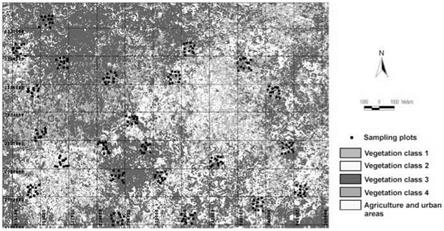We used a hierarchical sampling design. First, we selected 23 landscape units of 1 km2 considering the whole range of forest fragmentation; second, we located 12 plots within each landscape unit, using a stratified random design based on
(1) stand age (determined using interviews with local residents who had inhabited the area >40 years and owned/practiced agricultural activities on the land), and
(2) for plots with >15 years of abandonment, topographic position: hills or flat areas.
|
Fig. 11.1 Study area in the Yucatan Peninsula, Mexico |
This approach resulted in four vegetation classes (strata): (1) 3- to 8-year-old secondary forest, (2) 9- to 15-year-old secondary forest, (3) > 15-year-old secondary forest on flat areas, and (4) > 15-year-old secondary forest on hills (for details, see Dupuy et al. 2011).




